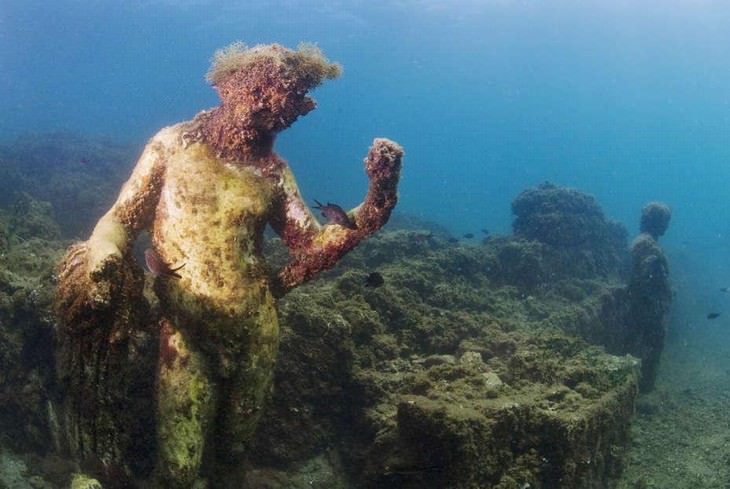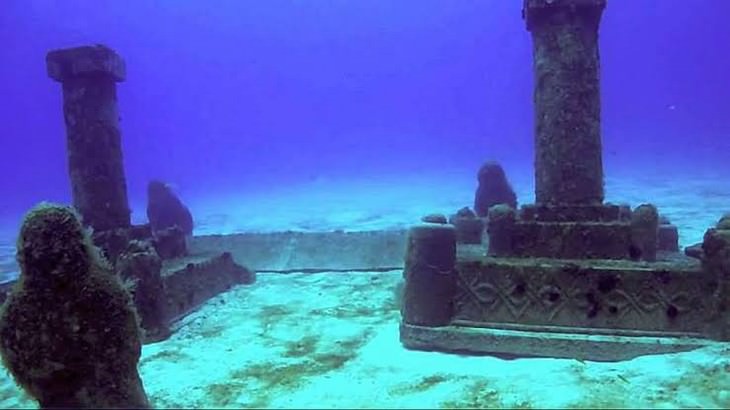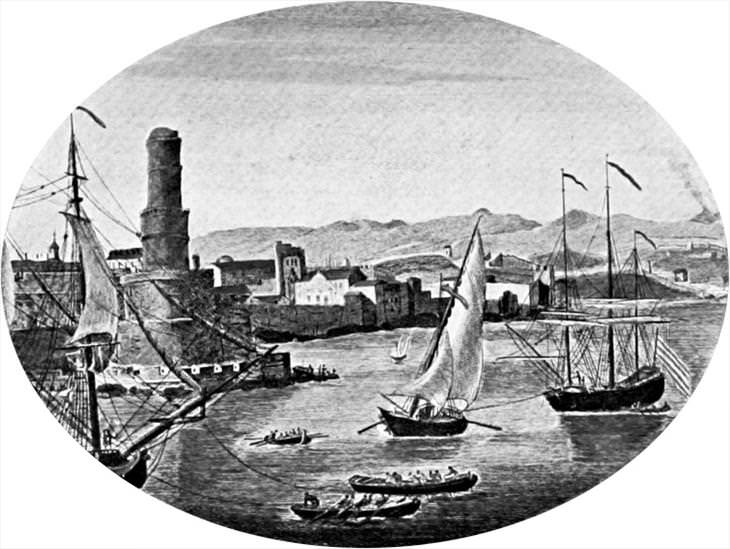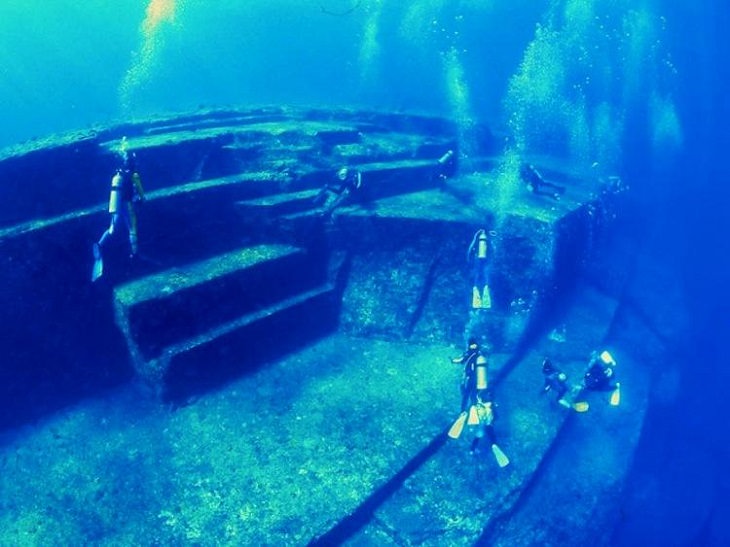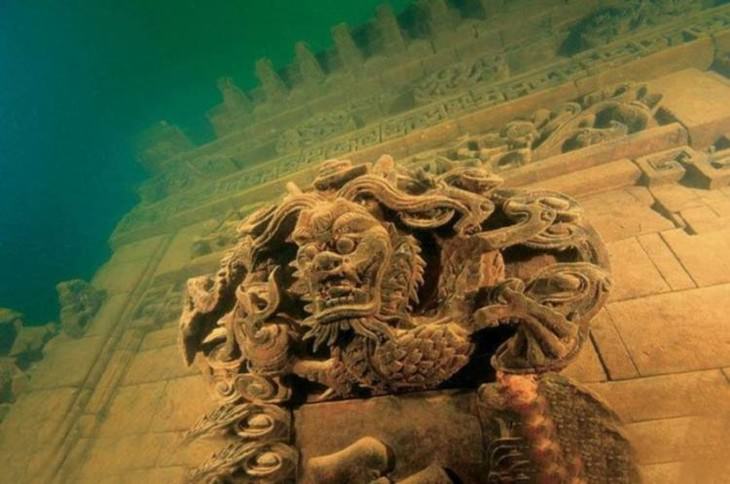1. Baiae, Italy
Image and Cover Source:
RedditLet’s start this list off with the Underwater Archeological Park of Baia, an ancient Roman city now engulfed by the Tyrrhenian sea that’s very close to other famous tourist destinations, such as Pompeii and Naples.
Today, the city is one of the few underwater archeological parks in the world, offering travelers the opportunity to admire the ruins of the once famous Roman resort via glass-bottomed boats, snorkeling, or even scuba diving.

Up until the 8th century, when the city was plundered by Saracens, it was the major Roman spa resort and a real party town often likened to modern-day Las Vegas. In large part, this was due to the city being located right under volcanic vents that created hot springs believed to have healing powers.
Many Roman emperors and other elites even had their own villas in the city. Today, visitors can admire what is left of the luxurious resort still, with winding paved roads, Roman columns, underwater sculptures and underwater grottoes hiding beneath the waters as shallow as 6 meters (19.6 ft).
2. Dwarka, India
Sanskrit texts tell of the ancient city of Dwarka, a magnificent kingdom of unimaginable wealth and glory built by the Hindu god Krishna himself. Until the year 2000, the city was believed to be the stuff of myth, but then, India’s National Institute of Ocean Technology found the ruins of a large port city 40 meters (131 ft) down on the surface of the Gulf of Khambhat.
Today, the ruins of the ancient city are among the most well researched underwater ruins in India, and numerous ancient artifacts, such as sculptures, pottery, and even human bones have been brought to the surface. There is also evidence of the remains of a large port in the city, suggesting overseas trade.
Carbon dating revealed that the city is at least 9,500 years old, thousands of years older than the earliest ancient Egyptian, Sumerian, Chinese and Indus Valley Civilization structures ever found. To this day, it is unknown which civilization built this massive city.
3. Port Royal, Jamaica
Once known as the "wickedest city on earth", two-thirds of Port Royal, the former seat of the British Government and the largest city in the Caribbean, were dragged beneath the ocean as a result of a massive earthquake followed by a devastating tsunami in 1692.
Until the cataclysm had befallen Port Royal, the city’s port was a beloved spot for pirates and various outlaws, which is how the city earned the above-mentioned nickname.
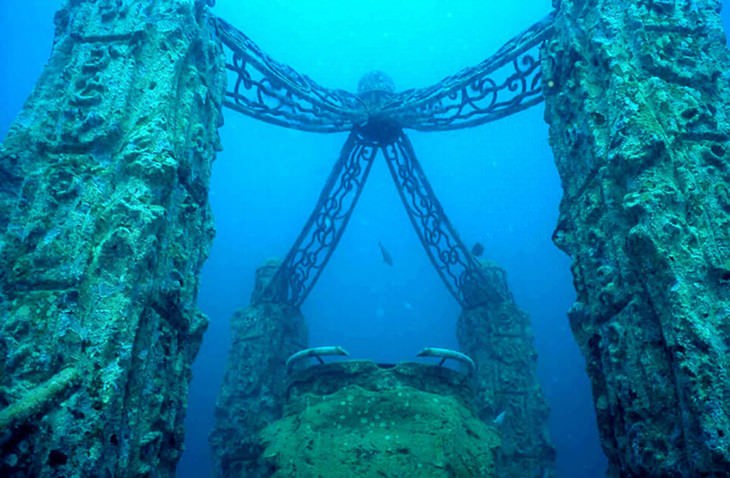
While the vast majority of the old city is hidden beneath the waves and can't be seen by eye, it became a historical treasure trove, hiding the secrets of the early days of British rule in Jamaica. Some of these findings have been retrieved and are displayed at the National Museum of Jamaica in Kingston.
4. Yonaguni Monument, Japan
The sea near the Yonaguni island, the southernmost of the Ryukyu Islands in Japan is a popular destination for divers, as a large population of hammerhead sharks resides there during the winter. In 1986, Kihachiro Aratake was diving in the area and noted some structure on the seabed resembling architectural remains.
Subsequently, several archeological and amateur expeditions were made in the area, with the Japanese Agency for Cultural Affairs and several international experts concluding that the structures found in the are natural formations rather than archeological ruins.
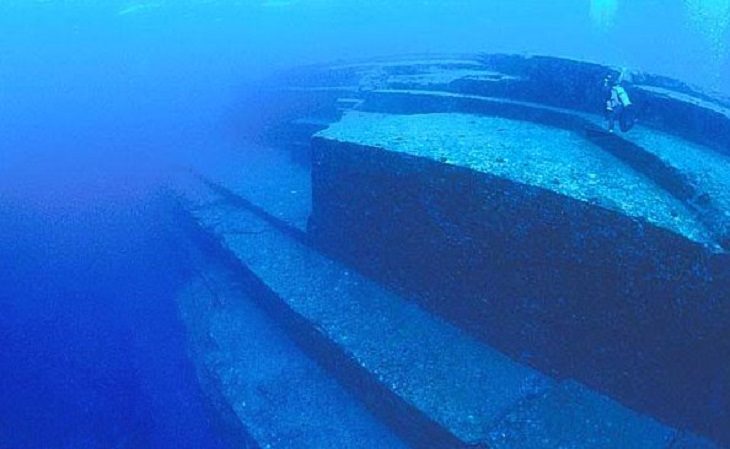
Still, several experts suggest that this could not be the case, with the greatest advocate of the opposition being archeologist Masaaki Kimura, who believes the findings are 2,000-3,000-year-old remnants of the ancient Japanese country called Yamatai.
While most official sources believe the step formations are natural results of earthquake breaking off layers of sandstone from the seafloor, the nature of these structures continues to be highly disputed.
5. Kalyazin, Russia

Kalyazin before 1917
To see the tip of the iceberg of what this city used to be, so to speak, you don’t need any diving equipment, it’s right there, in the middle of the Uglich Reservoir on the Volga river. Kalyazin is a city with a rich history dating back to the 12th century, with its most prominent landmark throughout centuries being the neoclassical Monastery of St. Nicolas.
Today, however, one can see only the tall bell tower of the monastery rising above water level of the Uglich reservoir that was created in 1940.
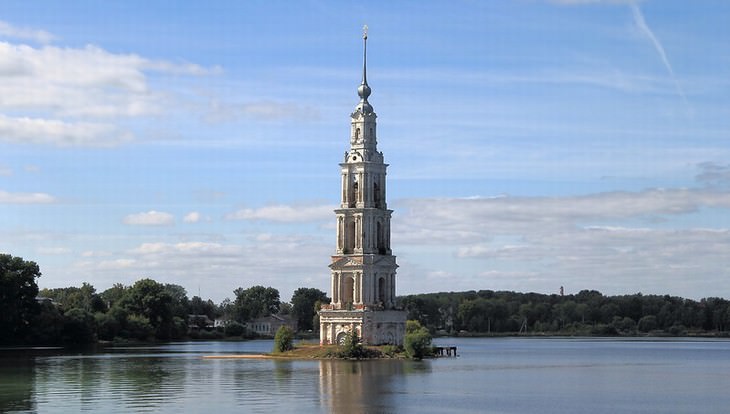
But Kalyazin is by far not the only place that was engulfed by water in an initiative to expand the freshwater supply or build waterways, the villages Sant Romà de Sau and Mediano in Spain, as well as 10 Canadian towns in Ontario, are just a few examples of places that have been relocated and submerged in water as a result of major construction projects.
6. Shi Cheng, China
This nearly 1,400-year-old Chinese city was nearly forgotten, although it was submerged during the creation of Hin’an river dam only in 1957. As a result of an initiative of building a hydroelectric power station, Shi Cheng (the Lion City) now finds itself 25-40 meters (85-131 ft) below the water.
The city architecture is scattered with rare examples of Ming and Qing Dynasty buildings, such as pagodas, temples, and archways with intricate carvings of lions and dragons.
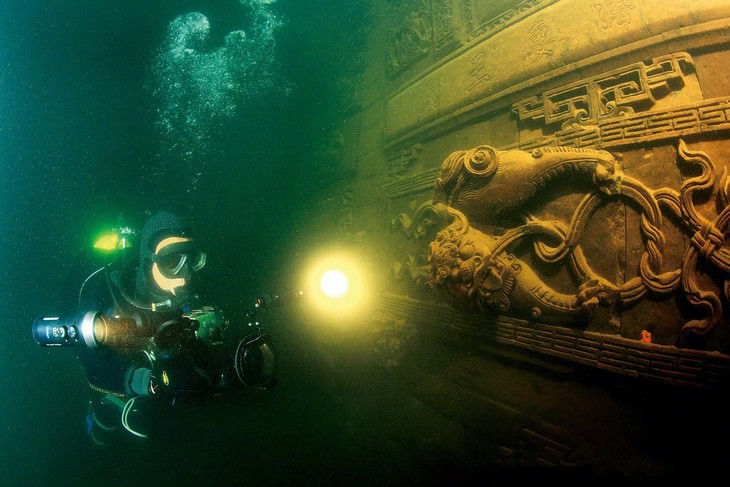
Nowadays, the hydroelectric power station is closed, and the enormous lake became a tourist destination known as the Lake of the Thousand Islands. Because the water temperatures in the lake are typically on the low side, the city was preserved exceptionally well, but unfortunately, only experienced divers are allowed to explore the city since it’s not well mapped and is situated quite deep.
7. Thonis-Heracleion, Egypt
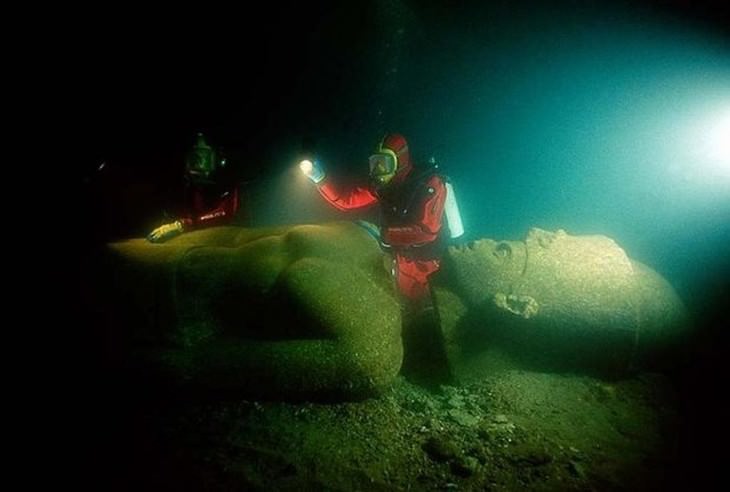
Image Source: Reddit
Excavations in the Abu Qir Bay area in Egypt continue to this day, with new and new Egyptian and Greek temples, treasure-laden ships and other priceless findings being uncovered. It’s unbelievable how just in the early 1990s, the ancient city of Heracleion and Thonis were believed to be nothing but a myth.
In fact, until the city was found just some 32 km (20 miles) northeast of Alexandria under 10 meters (30 ft) of water, historians were convinced that the city of Thonis and Heracleion were two distinct places. Today, we know that the city had two names, a Greek and an Egyptian one and that the city at the mouth of the Nile described in Herodotus’ chronicles was, in fact, very real.
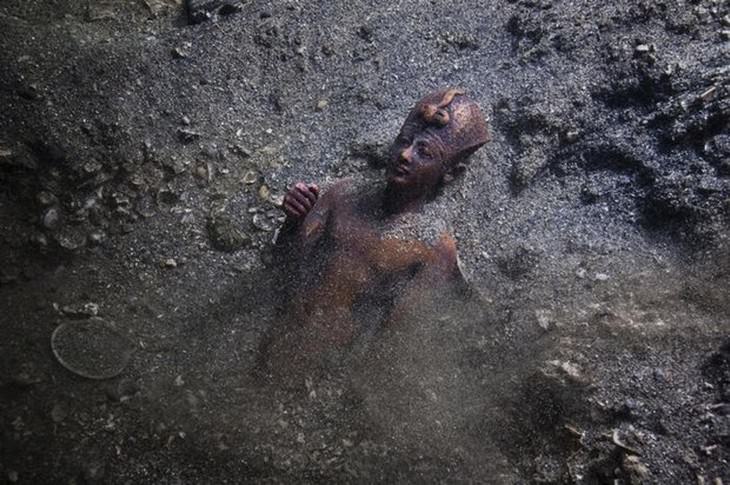
Image Source: Franck Goddio
According to Greek historians, the history of the city dates back to the 12th century BC, and it was an important trade center and port during the rule of pharaohs.
Gradually, the ground the city stood on was weakened by rising sea levels, earthquakes, and tsunamis, and by the late 2nd century BC, a severe flood made all the major buildings collapse underwater as a result of soil liquefaction. Gradually, but steadily, over the course of a few centuries, the city sunk and was nearly forgotten. To see more images of the excavations at Heracleion, click here.

